by staff | May 2, 2018 | Addiction, Addiction Stigma, Bullying, Coping Skills, Depression, Family, Mental Health, Mental Health Stigma, Mood Disorders, Parenting, Post-traumatic Stress Disorder, Stigma
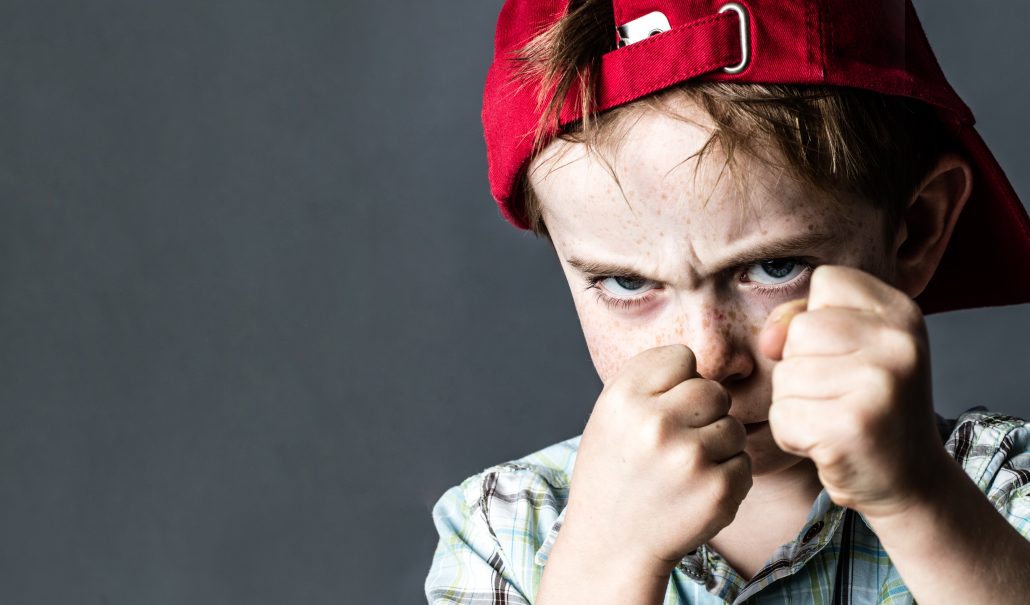
(This content is being used for illustrative purposes only; any person depicted in the content is a model)
Bullying is a concept we are all familiar with. We each experience bullying at some point in life, to one extent or another. Even those who become bullies have often been bullied at some point. Technology and social media have created a whole new breed of cyberbullying, and too many people don’t take bullying very seriously. When you look at bullying statistics, the impact can lead to other real issues, including substance abuse and addiction.
To be a Bully
Firstly, let us look at what it is to be a bully. The title is typically described as the use of superior strength or influence to intimidate, typically to force someone to do what one wants. The site stopbullying.gov defines it as unwanted, aggressive behavior that involves real or perceived power imbalance. This behavior is repeated or has the potential to be repeated over time. It also concludes that both those who are bullied and those who bully often have serious, lasting problems.
Bullying statistics show three categories of behavior:
1. Verbal Bullying
This type of bullying is about the things we say or write. Verbal bullying includes:
- Teasing
- Name-calling
- Inappropriate sexual comments
- Taunting
- Threatening
2. Social Bullying
This involves hurting someone’s reputation or relationships. Social bullying includes:
- Leaving someone out on purpose
- Telling other children not to be friends with someone
- Spreading rumors about someone
- Embarrassing someone in public
3. Physical Bullying
Physical Bullying involves hurting a person’s body or possessions. It includes:
- Hitting/kicking
- Pinching
- Tripping
- Pushing
- Spitting
- Taking or breaking someone’s things
- Making mean or rude hand gestures
Sadly, the prevalence of bullying often convinces people that it is just a rite of passage. A lot of people don’t take the issue seriously enough. Adults often justify the behavior as a sign of immaturity, without realizing the genuine harm that comes from it.
The Impact of Bullying
Being bullied can lead to many other adversities in life, including physical violence and mental health problems.
Because both behaviors are so common, it is difficult to correlate bullying and substance use. When looking at addiction and bullying statistics, according to 2016 Monitoring the Future survey:
- More than 17% of children have tried drugs by 8th grade
- Almost 50% have used illicit drugs by senior year in high school
- Childhood alcohol use rates are even higher
According to the CDC’s 2015 Youth Risk Behavior Survey:
- 20% of American high schoolers have been bullied in school in the past year
- More than 15% have been bullied electronically in the past year
Bullying can erode a child’s self-esteem. It can deplete their confidence, even for those who parents may believe are confident enough to endure a bully. Over time, they learn to question their self-worth. If a bully targets a specific attribute of the individual, they may begin to obsess over it.Some bullying statistics show that those who have been bullied are six times more likely to be diagnosed with mental health issues. It is extremely common for victims of bullying to develop progressive behavioral disorders such as:
Over time, they may turn to alcohol or drugs to ease the pain. Also, the desire to fit in and feel accepted can lead a child using drugs to connect with people. Several studies show the risk factors for psychological health problems, substance abuse, and bullying statistics often overlap.
Similarity in Symptoms
When we look closer at bullying statistics and at the warning signs of substance abuse, we find that the symptoms are extremely similar.
Common Symptoms of Bullying
- Depression
- Anxiety
- Changes in sleep patterns
- Changes in eating habits
- Eating disorders
- Poor performance in school or work
- Loss of interest in activities
- Alcohol or drug use
Common Symptoms of Substance Use Disorder
- Mood swings
- Poor performance in school or work
- Depression
- Anxiety
- Insomnia
- Withdrawal from social activities
- Health problems
Looking at some of the more general warning signs we can see how many are present concerning both issues.
Substances and Bullying Statistics
Ultimately, drugs can become a crutch for numbing the emotional pain of being bullied. While it is harder to predict whether being the victim of bullying will lead to substance abuse, with bullies there is also a very real risk of developing issues with drug use and addiction.
Bullying statistics often show that bullies themselves typically suffer from a variety of emotional and behavioral challenges. Sometimes a child lives in a home with domestic violence, and so they become aggressive with their peers to expel their frustration. Yet, they may still use drugs or alcohol to escape the painful life at home. Even the act of bullying itself is typically an indication of diminished self-worth, and just like with the victims, that lack of self-worth can lead them to use drugs.
Some even believe bullying could be comparable to an addiction itself. Some psychologists compare bullying to other ‘process addictions’ like gambling, overworking or shopping. While we do not recognize bullying as an addiction, many believe the comparison could be helpful to address the issue.
Compassion and Care
Whether or not someone is a victim or bullying, or has been a bully themselves, we all deserve respect and compassion. When it comes to providing care for those who struggle with substance use disorder, it should always be a priority to help people develop healthy coping skills, while gaining self-worth. As people struggle to deal with emotional and behavioral challenges, there should be resources there to help guide them toward personal development. Not just getting off of substances, but also to empower them as an individual.
One issue we have with facing bullying head-on is that people typically think of a “bully” as someone inherently bad. However, life is not so simple. A child who bullies isn’t a bad child, they are just interacting with their world in an unhealthy and aggressive way. They still deserve understanding and support.
We commonly see the same stigma with people struggling with addiction. Too often they are labeled as “bad” people, but the truth is that they are just dealing with things in a self-destructive and unhealthy way. Dealing with substance use disorder and with bullying means meeting it with love and care, not judgment and punishment.
Perhaps if focus more on supporting people, we have a better chance of changing addiction and bullying statistics for the betterment of everyone.
Palm Healthcare Company believes in the importance of compassionate and comprehensive care for those struggling with substance abuse and addiction. Providing a safe medical detox, a personalized recovery program and an innovative approach to holistic health, our mission is to help people transform into the person they want to be. If you or someone you love is struggling, please call toll-free now.
CALL NOW 1-888-922-5398
by Justin Mckibben | Apr 26, 2018 | Addiction Treatment, Detox, Harm Reduction, Heroin, Inpatient Treatment, Needle Exchange Programs, News, Opioids, Outpatient Treatment, Professionals, Recovery, Safe Injection Sites, Sober Home
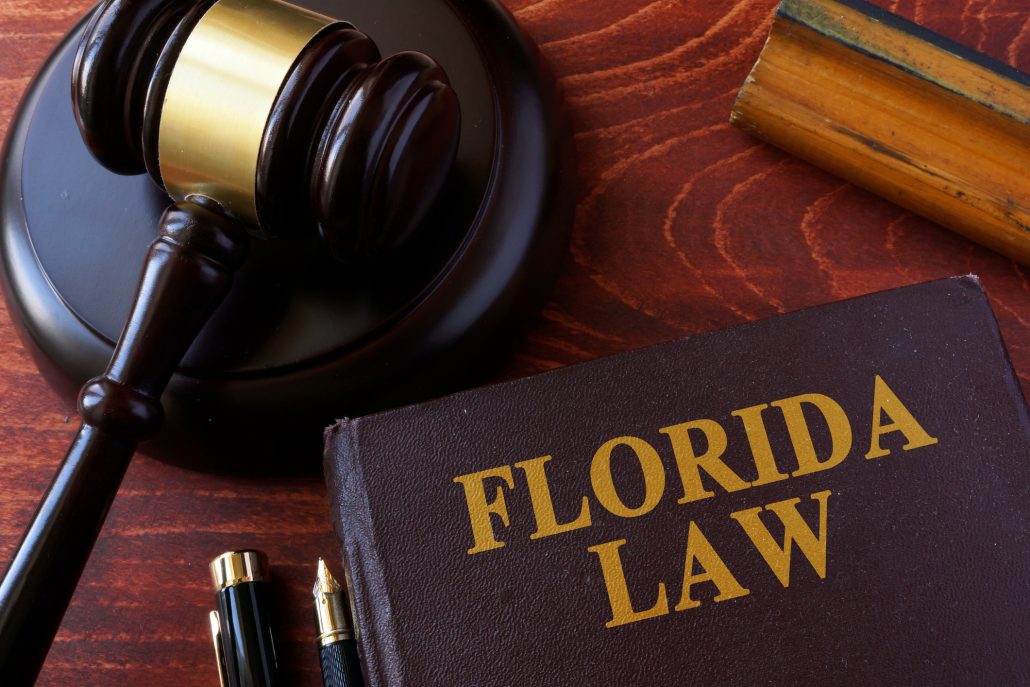
8 months ago, Florida was home to 953 licensed drug treatment centers, and 207 were in Palm Beach County. As of April 1, there are now 185 in Palm Beach, with 771 in the whole state. This decrease is due to the crackdown on fraud by Palm Beach State Attorney’s Office, which has led to 45 arrests in the last year and a half. So far, those arrests have led to 16 convictions. For State Attorney Dave Aronberg there is no sign of slowing down.
Recently, Dave Aronberg spoke with Opioid Watch to talk about the work his office has been doing to try and strengthen the addiction treatment industry. Chief Assistant State Attorney Alan Johnson also sat down to talk about how Palm Beach County is fighting to protect those who are coming to Florida for help. Johnson heads the office’s Sober Homes Task Force.
Dave Aronberg VS Purdue Pharma
According to Aronberg, he got involved with opioid-related issues back in 2001, when he was an assistant attorney general. Aronberg says he was asked by his boss, Bob Butterworth, to investigate Purdue Pharma. This Big Pharma giant is the producer of OxyContin. This powerful prescription opioid has been credited with making a heavy contribution to the opioid crisis. Dave Aronberg was to examine the marketing practices of Purdue Pharma, and is quoted in the interview transcript stating:
“I believe we were one of the first in the country.”
Of course, now Purdue Pharma is one of many big name pharmaceutical companies being accused in lawsuits across America. In fact, Delray Beach, Florida recently filed its own case against the company.
When asked about what he found, Aronberg said that Purdue was marketing the product like it was Advil. Purdue has been repeatedly accused of pushing this product as if it was far less dangerous than it actually was. In 2002, Dave Aronberg was elected to state senate, and shortly afterward the case against Purdue was settled. In the edited interview transcript, Aronberg is quoted:
“Purdue also offered $2 million to the state to establish its first prescription drug monitoring program. I worked in the state senate to get the PDMP enacted into law. But some conservatives refused to go along. They thought it was Big Government. So Purdue’s $2 million went away, because the offer expired. We didn’t get the PDMP till 2011. By then the carnage was horrific.”
Furthermore, Opioid Watch notes that a Purdue spokesperson confirmed that the state failed to implement a PDMP by July 1, 2004, which was the expiration of the companies offer.
Dave Aronberg Goes to Congress
In December of 2017, Aronberg went in front of Congress to testify concerning fraud and abuse in the addiction treatment industry. In this meeting, they discussed various issues with shady facility operators in Florida and made suggestions on how the law could step in to change it and protect patients. The interview transcript quotes Aronberg:
“In recent years, we’ve had an influx of unscrupulous operators who enrich themselves by exploiting those in recovery. As a consequence, we’re attracting thousands of young people from throughout the country into fraudulent rehab centers. (We’re talking about some, not all. There are good rehab centers, too.)”
Again, Aronberg found himself at battle with shady marketing practices. While investigating the treatment industry, Aronberg’s office discovered illegal operations that not only manipulated insurance providers but put patients at extreme risk.
From patient brokering, where illicit actors would sell patients with insurance to the highest bidders, to illegal kickback schemes being run by sober homes to outpatient treatment programs. Chief Assistant State Attorney Alan Johnson added information about the exploitation of urine analysis costs, and even some programs that began billing insurers for allergy and DNA testing. Aronberg states:
“We have a doctor who billed $7 million in nine months for allergy tests.”
Needless to say, the task force and state officials had their work cut out for them.
The ACA, ADA, and FHA
When talking about the many scams being run by various illegitimate businesses, the conversation came back to insurance and how these cons run. Here Dave Aronberg talks about his beliefs on how the law should step in and help restructure the current system.
“Number one: Change the Affordable Care Act’s fee reimbursement model to an outcome-based reimbursement model. Where the good providers are rewarded and the bad ones are paid less. Right now, the opposite occurs, so the more times you fail, the more money you get. There’s an incentive for more services and for more relapse. That shouldn’t be.”
After talking about the issues with the ACA, he talked about the ADA and FHA.
“The second change we need is this: the Americans with Disabilities Act and Federal Housing Act have been misused and exploited by bad actors who own flophouses.”
He went on to say,
“Local governments are largely prohibited from overseeing the sober home industry. If they want to require mandatory inspections, certifications, and registrations, they’re likely prohibited under federal law.”
In essence, Aronberg believes the law should allow local governments to create their own guidelines for health, safety and the general welfare of the patients. None of these demands seems outlandish, and with reasonable regulation, the reputable and effective providers in this industry can continue to best serve the South Florida recovery community.
Aronberg also points out that the problem is not only in Florida. Recently, he went to Orange County, California to meet with officials dealing with the same situation. Next for Dave Aronberg is leading the national task force of 34 prosecutors in 30 states. Their goal is to produce a working paper for setting best practices for prosecutors all over America concerning these issues. The task force also intends to make suggestions for changes to federal and state laws.
What might be most surprising though is the mention of harm reduction strategies?
“It’s about prevention, drug treatment, and innovative strategies. I think it will be powerful because it’s going to be prosecutors talking about needle exchanges and disposal and safe injection sites. People assume prosecutors are going to be focusing only on mandatory minimums and longer sentences. That’s not what this is about. I think it’s going to surprise people.”
While needle exchanges and safe injection sites have been proposed in numerous states, it is not the most popular idea. San Francisco is actually on track to open the first safe injection site in America, with Philadelphia not far behind, and Seattle and Baltimore in the conversation as well.
With Aronberg and the task force working to make a difference, hopefully, we will see the right change soon. We hope it will make the recovery community stronger as a whole. Reputable and respected providers are also doing their part to refine their practices while implementing innovative and effective resources to ensure that those who with drug or alcohol addiction always have a safe place in Palm Beach County to get the help they need. With the opioid crisis ongoing, having real resources for opioid treatment is still an essential part of overcoming the problem.
Palm Healthcare Company is a leader in holistic addiction treatment with over 20 years of helping people from all over the country heal mind, body and spirit. Providing safe and comprehensive care should always be a focus in the effort to overcome the drug problem, and preservation of life should always be a priority. If you or someone you love is struggling, please call toll-free now.
CALL NOW 1-888-922-5398
by Justin Mckibben | Apr 24, 2018 | Addiction, Ambien, Celebrity, Drug Abuse, Methadone, Prescription Drugs, Recovery, Valium, Vicodin
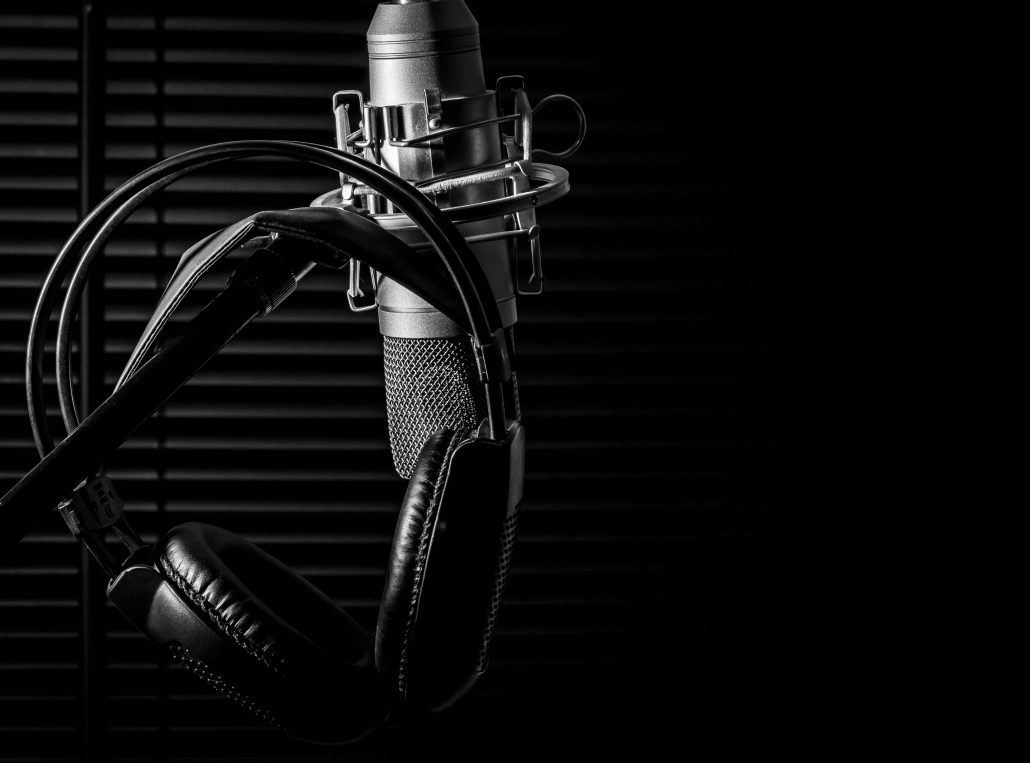
Eminem; Marshall Bruce Mathers III; The Real Slim Shady, is not just an icon in rap who had an unfathomable impact on hip-hop culture. He is also a man who has endured a lifetime of public controversy, private conflict, personal loss and emotional pain. Not only does this make his music career that much more powerful, but it makes his journey through addiction and recovery that much more gripping. With Eminem celebrating 10 years of sobriety this month, we take a quick look at the story of sober Slim Shady.
Eminem Celebrating Sobriety
A few days ago, between his headlining sets at this year’s Coachella, 45-year-old Marshall Mathers took to social media to share a message with his fans. On Instagram Slim Shady posted a photo of his ten-year medallion on Saturday, April 21. The circle, marked with an ‘X’ for the Roman numeral ten, is a token he received to commemorate a decade of continuous sobriety. To caption the image, he wrote:
“Celebrated my 10 years yesterday”
In just 2 days’ time, the image had already garnered over 1.7 million likes and over 33,000 comments. He wasn’t the only one utilizing his social status to share that powerful moment. Fellow rap artist and friend in sobriety Royce Da 5’9” also took to Twitter to give the real Slim Shady a shout out for his recovery milestone, writing:
“Happy sobriety birthday to my mentor @Eminem… Keep fighting the good fight homie… I love you for life”
Eminem has also shared moments of his journey through recovery with other famous sober peers, including Sir Elton John. The post prompted many fans on social media to congratulate Mathers on his anniversary. Others shared how he had helped inspire many others in recovery.
The last ten years have not been easy for Slim Shady, but it seems they have been worth it.
A Quick Look at a Legend
Long before Eminem got sober, he was a household name and best selling artist. Over his whole career, he has had a truly incredible list of accomplishments, including:
- 10 number-one albums on the Billboard 200
- Five number-one singles on the Billboard Hot 100
- 4 million albums sold in the US
- 220 million records globally
- He is among the world’s best-selling artists of all time
- He is the only artist to have eight albums consecutively debut at number one on the Billboard 200
- Winner of 15 Grammy Awards, including Best Rap Album
All of this, not to mention successful clothing lines, the creation of his label Shady Records which helped launch artists like 50 Cent and Yelawolf, and his own Sirius XM Radio channel, Shade 45. He gave us such gifts as D12 and Slaughterhouse, while also inspiring countless other artists.
Eminem isn’t only known for his music, but also for the controversy surrounding him. Whether it was the ugly battles with his mother, ex-wife, or the legal trouble he was conflicted with publically, it all fueled an image of a man who lived in a courtroom fighting painful scandals. He used the pain in his creative process, and the world was given a lot of angry, violent, and even poetic moments.
The Academy Award-winning film 8 Mile, which he starred in, made him the first rap artist to ever win the award for Best Original Song with “Lose Yourself”. Followed by various other film and entertainment ventures.
Oh, and don’t forget the Marshall Mathers Foundation, which aids disadvantaged youth.
The list just goes on and on. There is not enough time here to cover the truly immeasurable impact Eminem has had on not just hip-hop culture, but on the overall culture in America.
Getting to 10 Years
Slim Shady has always been pretty public about his struggles with addiction to prescription drugs. It is laced in his image over the years and is a prominent subject of his music. Back in 2002, a fellow artist said he had been trying to straighten out, but while working on 8 Mile he was introduced to Ambien and this prescription took him deeper down the path. When talking about working on his album Encore, Slim Shady once said he would “just go into the studio and goof off [with] a pocketful of pills”.
In 2007, Eminem suffered from an accidental methadone overdose after his addiction had spiraled out of control. At one point he revealed that he was taking up to 60 Valium and 30 Vicodin pills a day. After adding Ambien to the mix, he made his way to methadone by the end of his substance abuse. In 2011 when interviewed about the overdose, he stated:
“The doctors told me I’d done the equivalent of four bags of heroin… They said I was about two hours from dying.”
In a 2011 New York Times interview Slim Shady said,
“I used to get pills wherever I could. I was just taking anything that anybody was giving to me.”
Following that near-death experience, the Detroit rap legend chose to attend an addiction treatment program in Michigan. However, he ended up relapsing short of a month out of the hospital.
He reported that his star status made rehab difficult for him to focus on himself. Instead, he chose to detox at a hospital and dove into counseling and therapy. He credits his children, including his biological daughter Hailie, and two adopted daughters Lainey and Whitney. He also gives credit to exercise, saying that running helped him find a healthier high that helped him sleep.
When looking at his story, it is absolutely remarkable the impact that Slim Shady had had on the world of hip-hop or just music in general. He has been described by many as one of the greatest artists of all time, with billions of fans all over the globe. To hear about the life he lived; through poverty, depression, desperation, and addiction, to be a living legend only speaks to the inspiration in his experience, strength and hope. We celebrate the path Eminem walks and the work he has done over the years to make it this far.
Thank you for sharing, Slim Shady.
It can be a real inspiration to see some of the most successful people are recovering alcoholics and addicts. It reminds us that we all can suffer the same way and that we all have the same chance to build a better future. The more heroes we have every day that step up and share their message of hope, the more hope we may have that people seek the help they desperately need. If you or someone you love is struggling with substance abuse or addiction, please call toll-free now.
CALL NOW 1-888-922-5398
by Justin Mckibben | Apr 18, 2018 | Addiction, Anti-Social Personality Disorder, Anxiety Disorder, Depression, Dual Diagnosis, Mental Health, Mood Disorders, Post-traumatic Stress Disorder, Schizophrenia

(This content is being used for illustrative purposes only; any person depicted in the content is a model)
It is not so far-fetched to be told that someone whose life is consumed with drug or alcohol dependency can find themselves facing the emotional and mental fallout. When dealing with mental health issues, it is not rare for people to also struggle with substance use disorder. Co-occurring conditions such as these tend to feed off of each other, or even help create one another.
It is almost like when someone has high blood pressure, we are not surprised when they develop heart problems. Sometimes side effects and symptoms of one condition can nurture new ailments.
According to so researchers, there are some more common combinations of co-occurring disorders with addictions. So which addictions are most likely to co-exist with each mental health condition?
Here are 5 of the most common co-occurring disorders with addictions (not in any particular order):
-
Schizophrenia with Marijuana Addiction
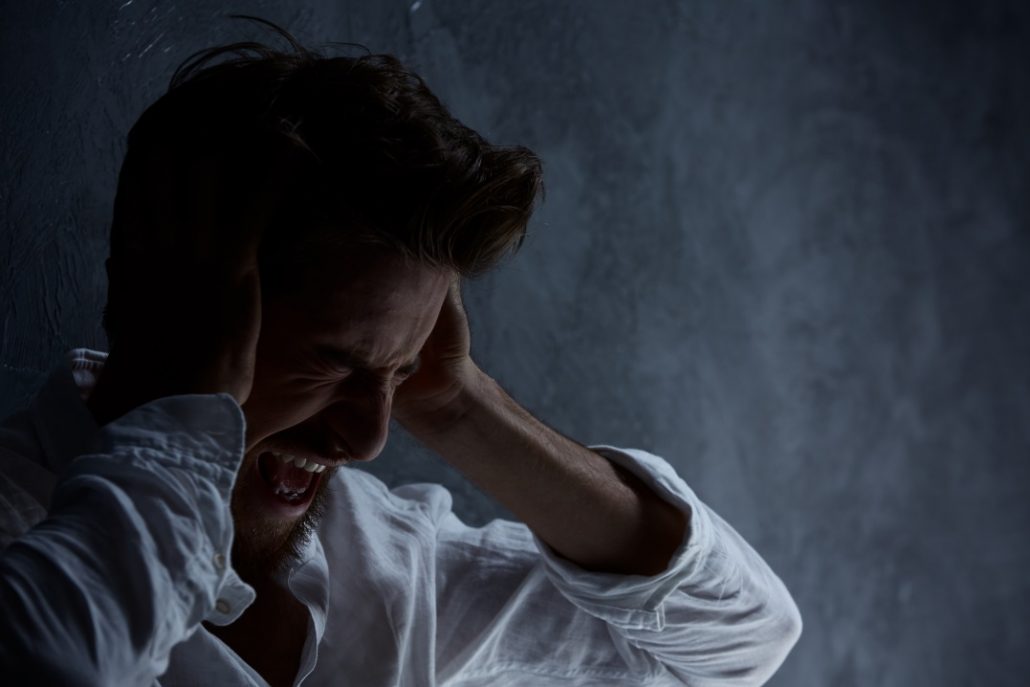
One disorder that commonly co-exists with a substance use disorder is schizophrenia. The American Journal of Psychiatry released a study that suggests approximately half of all people with schizophrenia also have a substance abuse disorder.
But one substance stands out the most when looking at people living with schizophrenia- marijuana.
The exact cause of schizophrenia is unknown, but many suspect a combination of environment, genetics and altered brain chemistry and structure to all play a part. So it is unclear why people with schizophrenia would abuse marijuana. Especially since this drug typically produces many of the same symptoms these people experience when in the midst of a schizophrenic episode. Some of these symptoms include:
- Short-term memory problems
- Delusions
- Unusual or dysfunctional ways of thinking
- Difficulty beginning and sustaining activities
- Impaired executive functioning
While not all symptoms are the same for everyone, some of these more common symptoms definitely overlap between the two. While it may not be obvious why, research suggests it is pretty obvious that marijuana is most popular for people with schizophrenia.
-
Alcoholism and Anti-Social Personality Disorder

You might be surprised with this one because most people assume alcohol is most commonly matched with depression.
Anti-social personality disorder is easier to understand when one explains the concept of personality disorders in general.
To put it simply, a personality disorder is an enduring pattern of personal experience and behavior that deviates noticeably from the expectations of the individual’s culture, which leads to personal distress of impairment. So antisocial personality disorder (ASPD) is characterized by a tendency to disregard and even violate the rights of others. Symptoms can vary from egregious to outright dangerous. They include:
- Irritability
- Aggressiveness
- Lack of remorse
- Consistent irresponsibility
- Recklessness
- Impulsivity
- Deceitfulness
- Lack of stability in a job and home life
- Disregard for society and laws
- Violation of the physical or emotional rights of others
Often the more intense cases earn the titles of sociopathic or psychopathic.
Alcohol abuse very frequency co-occurs with other mental health disorders. However, according to the National Institute on Alcohol Abuse and Alcoholism (NIAAA), the disorder with the closest connection to alcoholism is anti-social personality disorder.
In fact, people who drink to excess on a regular basis are 21 times more likely to deal with ASPD when compared to people who don’t have alcoholism.
The NIAAA also states that both of these disorders typically develop early in life. However, alcoholism can actually make the underlying mental illness worse. Intoxication can lower an individual’s inhibitions, which makes their antisocial behaviors more prevalent. This may also lead to more dangerous manifestations of the disorder.
-
Anxiety Disorders and Cocaine Addiction

Cocaine is an extremely powerful narcotic stimulant, which gives users feelings of intense euphoria. However, the tradeoff is a very steep price to pay considering how dangerous this drug really is. Continued cocaine use typically leads to symptoms that essentially mirror an anxiety disorder, including:
- Restlessness
- Hallucinations
- Paranoia
- Insomnia
- Difficulty concentrating
- Aggression
Because cocaine is a stimulant, it speeds up and amplifies activity of the brain’s neurotransmitters. Certain neurotransmitters at higher levels induce anxiety. So anxiety is actually a symptom of cocaine use already. Cocaine use also has the potential to create psychotic episodes. Some people even experience severe mental symptoms as a result of use.
As a long-term effect of cocaine use, brain circuits are more sensitive while struggling to respond to natural stimuli, and the results are often related to mood and mental health. Statistics show that there is a very high risk of anxiety and cocaine abuse occurring together. Then if you already have an anxiety disorder, the risk becomes even higher that you will develop a severe emotional problem when using a drug like cocaine.
While the adverse effects of cocaine use can eventually fade for those able to achieve a long-lasting sobriety, sometimes the damage lingers. Those unusual thoughts and behaviors can continue even long after someone has given up the drug.
-
Prescription Opioid Addiction and PTSD

Post-traumatic stress disorder (PTSD) is a mental illness that takes hold in the aftermath of an intense and traumatic experience. Often, people who survive tragedies, war and other dangerous or life-altering events will experience PTSD.
In some circumstances, people will leave their experience with serious physical injuries, and often, those injuries are treated with prescription painkillers. This is just one way that prescription opioids have contributed to a huge epidemic that has been hurting America for the past several years.
Prescription opioids often boost feelings of pleasure and calm inside the brain, and sometimes people who have PTSD end up abusing these medications in order to experience euphoria and numb themselves to not just their physical agony, but also their emotional trauma. This can become an endless cycle of self-medicating. This is especially true with veterans. In fact, some research indicates that veterans with pain and PTSD are 3 times more likely to receive opioids compared to those without any mental health disorders.
It is true that having effective pain medications is very important to improve the quality of life for those with physical pain, especially chronic pain patients. However, mixing powerful opioids like prescription painkillers with PTSD can lead to tragic outcomes. With increasing rates of veteran suicides over the past several years, one can only image what impact the surging opioid crisis may have had on those struggling with PTSD.
-
Depression with Heroin Addiction

Throughout one of the worst drug epidemics in American history, heroin has been a driving force behind countless overdoses and skyrocketing death rates. Heroin isn’t just devastating physically, but also mentally and emotionally crippling. The connection between these adverse effects and depressive disorders is remarkable.
The allure of heroin is that is can make users feel an overwhelming sense of pleasure for a short time. However, long-time use of heroin can burn out the portions of the brain responsible for producing natural signals of pleasure, leaving them incapable of feeling good on their own without the drug. The drug alters brain chemistry and creates mood changes.
Advances in Psychiatric Treatment estimates that 48% of opioid users have experienced depression at some point in their lives.
Extended use of heroin can eventually cause a form of brain damage that leads to depression. Users can become physically incapable of feeling happiness unless the drug is present. Withdrawal symptoms from heroin can also exacerbate symptoms of depression. Many of them are actually overlapping symptoms, such as:
- Restlessness
- Irritability
- Slow thinking, speaking or body movements
- Loss of interests
- Sleep problems
- Physical pains
- Headaches
- Changes in appetite
The combination of depression and heroin addiction is incredibly common. Sometimes it can be difficult for people to tell which issue came first, but ultimately they can both be exceedingly debilitating, or even deadly.
Dual Diagnosis Treatment
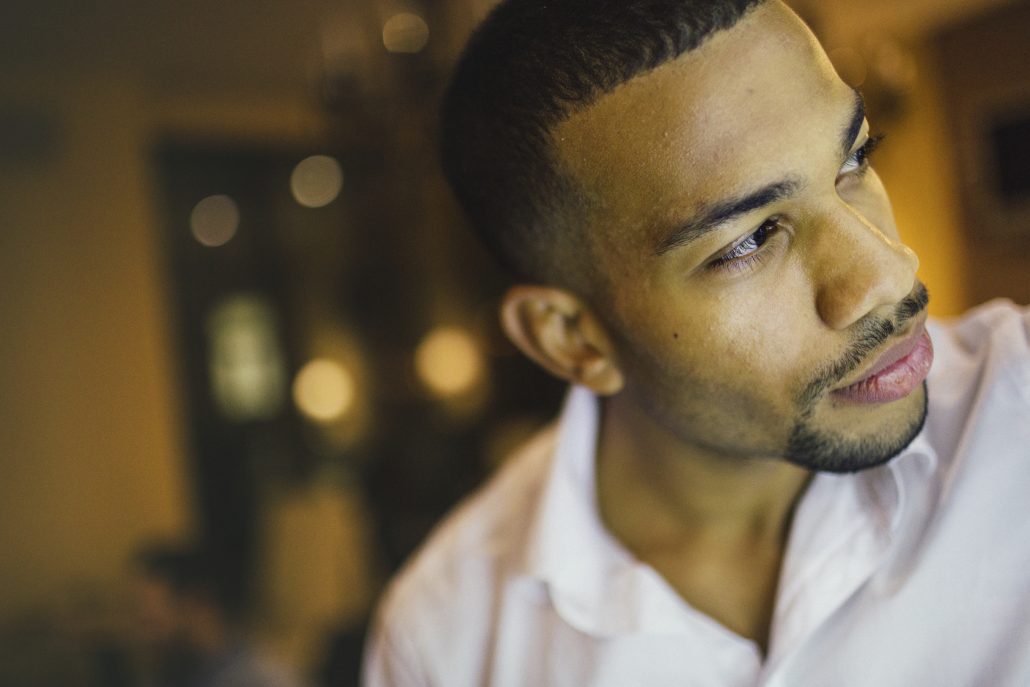
Dual diagnosis means that a person is dealing with two medical conditions that are co-occurring. In regards to the field of drug addiction, dual diagnosis specifically means that someone is struggling with both substance use disorder and another mental or behavioral health issue. Sometimes it is because prolonged drug use has contributed to developing a mental health issue, while other times it is because someone has tried to self-medicate when facing a mental health issue.
Dual diagnosis treatment is so important because it provides the opportunity to treat both co-occurring disorders simultaneously. For those suffering with more than one disorder, it is not nearly as effective to focus on treating one while ignoring the other. Holistic healing is all about addressing every aspect of each individual to help them find success in every part of their life.
Palm Healthcare Company believes in providing holistic addiction resources to help treat not just the addiction, but also any other issue that could be holding you back from achieving a full life of lasting recovery. If you or someone you love is struggling, please call toll-free now.
CALL NOW 1-888-922-5398
by Justin Mckibben | Apr 17, 2018 | Donald Trump, Marijuana, Medical Marijuana, News
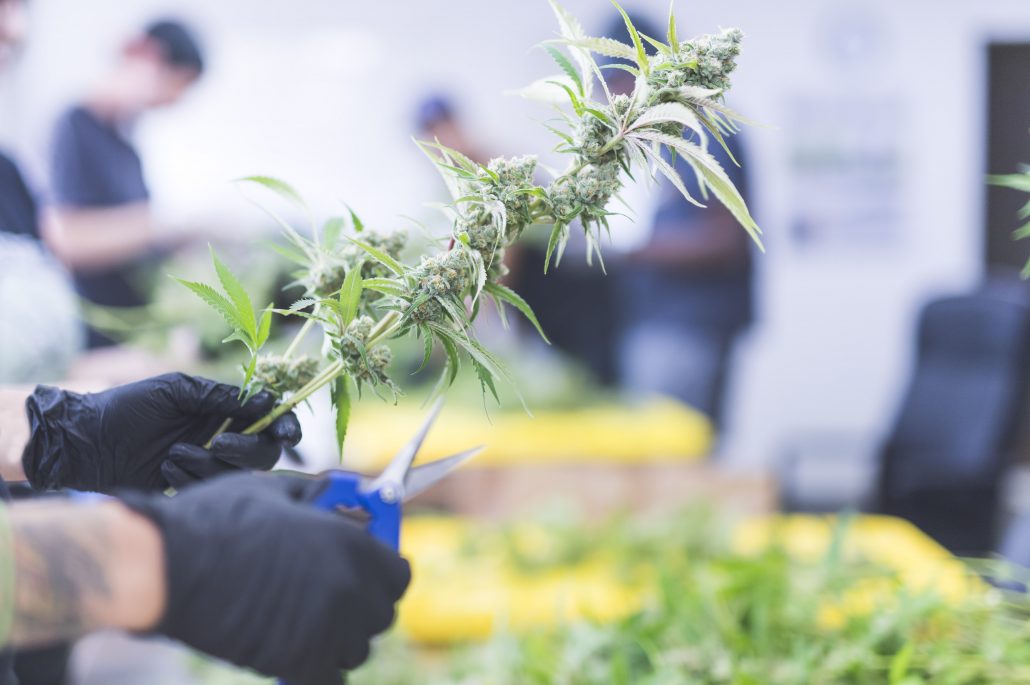
When the Trump administration’s Attorney General Jeff Sessions said in January he was determined to “return to the rule of law” in America, with the intention of enforcing federal prohibition of cannabis in all 50 states, it created quite a bit of backlash. Many officials in states where marijuana had been legalized either medically or for recreational use spoke out against it.
Just a few days after former Republican Speaker of the House John Boehner endorsed decriminalization, it seems there is more big news concerning cannabis.
Now, it seems President Trump himself is turning on Sessions. A recent report states that Trump has promised to support legislation that will protect the marijuana industry in states that have already legalized the drug.
Trump and Cannabis
During the 2016 Presidential campaign, then-candidate Trump was relatively inconsistent about his own position on cannabis. At one moment, he would pledge that he was going to respect state’s rights when it came to legalized marijuana. Then, he would criticize legalization and imply that it had to be stopped.
In 2015 at the Conservative Political Action Conference, he said recreational pot was “bad.” He even criticized Colorado, which was the first American state to legalize recreational marijuana sales, saying:
“They’ve got a lot of problems going on right now in Colorado – some big problems,”
But then a year later, on the campaign trail, Trump changed his tune during an interview in Colorado, saying:
“I’m a states person, it should be up to the states, absolutely.”
While it isn’t impossible to be opposed to recreational use while still supporting a state’s right to decide for themselves, many were still blindsided when Sessions made his announcement back at the beginning of the year that he doing away with the Obama era policy of non-interference with state laws on cannabis. At the time, Sessions stated:
“The previous issuance of guidance undermines the rule of law and the ability of our local, state, tribal, and federal law enforcement partners to carry out this mission.”
One person in particular who was taken aback was Colorado Republican Senator Cory Gardner, who said Sessions had promised him he’d do nothing to interfere with Colorado’s growing marijuana market.
Gardner Fought Back
Senator Gardner was not prepared to sit this one out, either. In protest of Sessions, Gardner used his power as a senator to block all appointments to the Department of Justice. Gardner’s pledge is especially impressive as a Republican fighting an administration run by members of his own party.
It did not go unnoticed. Other GOP members were not happy about Gardner’s insistence. Last month Gardner actually allowed some nominees to proceed as a show of “good-faith”. For months the senator has been meeting with the Justice Department to discuss the issue. Now it finally seems it may be all paying off for Gardner.
Following a promise from the Trump administration, Gardner said he would be fully releasing his holds on DOJ nominations. Gardner states,
“Late Wednesday, I received a commitment from the President that the Department of Justice’s rescission of the Cole Memo will not impact Colorado’s legal marijuana industry.”
Gardner also states that President Trump has promised Gardner-
“-that he will support a federalism-based legislative solution to fix this states’ rights issue once and for all.”
White House press secretary Sarah Sanders confirmed the administration’s position and said that Senator Gardner’s statement was accurate.
Currently, the drafting of legislation to protect states with legalized marijuana is underway. Some speculate it may be modeled after another Obama era budget amendment that prevented the Department of Justice from spending money to enforce federal laws against states where marijuana had been legalized, permitted the state law was being followed.
While at this time Sessions has not made a public statement about this development, sources familiar with the topic report that the Justice Department was not consulted before the phone call between Trump and Gardner.
So the next question is, will President Trump follow through on this promise? What kind of legislation is he willing to support? What language will be used to ensure that states have the ability to decide their own legal status and regulations for cannabis?
Help for Marijuana Abuse
While the legal status of cannabis may change as the government adjusts to new policies, the fact remains that it is still possible to abuse marijuana. Even when drugs are legal, there are still plenty of risks. We know this because there are drugs that have been legal for decades but still manage to negatively impact thousands of people. Habitual substance use can be extremely harmful, especially to someone who struggles with substance use disorder. Even marijuana can have adverse effects on the quality of life for someone with a substance abuse problem.
Cannabis is not commonly considered to be as dangerous as other illicit drugs, such as heroin or methamphetamines. However, people who use the drug can still experience different levels of dependence. Marijuana may not be as physically destructive and addictive as other “harder” drugs. However, psychiatrists also believe the psychological impacts of substances do make a difference. Psychology effects can be just as detrimental.
Getting help for marijuana abuse starts with a secure environment that offers a variety of therapeutic opportunities. Developing a healthy lifestyle without relying on the use of drugs is a crucial element of treatment for marijuana abuse. So as policies and public opinions change regarding cannabis, we should also make sure that there are always resources to help those who struggle with substance use disorder.
There still needs to be resources available to help people who suffer from abuse. Supporting addiction recovery means breaking the stigma and offering holistic and effective solutions. Palm Healthcare Company is here to help. If you or someone you love is struggling, please call toll-free now.
CALL NOW 1-888-922-5398
by Justin Mckibben | Apr 13, 2018 | Addiction, Drug Policy, Marijuana, Medical Marijuana, News
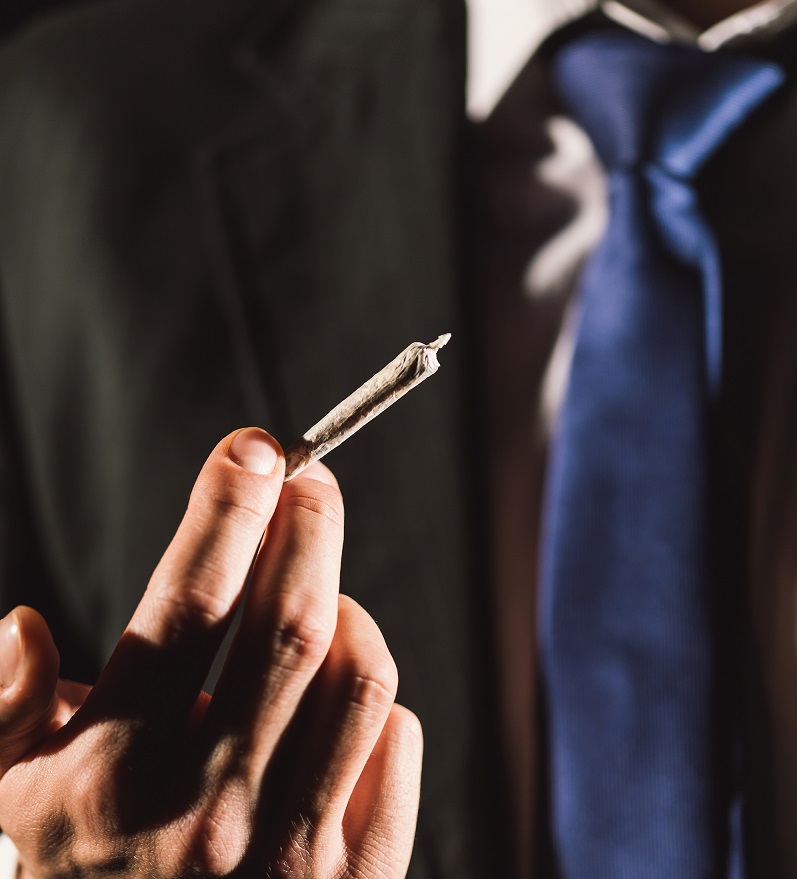
Anyone who pays attention to politics has a lot to talk about this week. There is plenty going on in the world of government, from Facebook and Congress to scandals and controversy. But one bit of surprising news comes from someone who has stepped away from politics for some time now. John Boehner, well-known figure in the Republican Party, recently has made a dramatic shift in support of cannabis legalization.
Who is John Boehner?
Just to provide a little background, John Boehner is an American politician who served as the 53rd Speaker of the United States House of Representatives from 2011 to 2015. He served on behalf of Ohio’s 8th congressional district from 1991 to 2015. This district includes rural and suburban areas near Cincinnati and Dayton.
For a long time, John Boehner was known for his hard-line stance against marijuana legalization. At one point he was even quoted as saying he was “unalterably opposed” to legalizing marijuana. While serving in government, Boehner was never an ally for marijuana advocates, and the only vote he ever cast on the topic of legalization was in 1999 when he fought against medical marijuana in Washington.
In fact, one advocate remembers Boehner as being in strong opposition to marijuana while in office. The executive director of the National Organization for the Reform of Marijuana Laws, Erik Altieri, said Boehner has actually opposed “even the mildest of marijuana law reforms.”
So many have seen this sudden endorsement from John Boehner for marijuana reform as a sign of the times, and how much the political landscape has changed.
Acreage Holdings
Acreage Holdings is a company that cultivates, processes and dispenses cannabis in 11 states around America. On the company website they state:
“These combined markets represent $9 billion in potential revenue by 2020, and we’re ready to move forward as legislation allows.”
The website also states:
“2018 is going to be a record-breaking year for Acreage, as we expect production to increase in several lucrative states including New York, Florida, California, Pennsylvania, Maryland and Maine. We’re looking beyond this year, however, with a comprehensive strategy that will make us the world’s largest fully-integrated cannabis company.”
With recent reforms the cannabis industry has a growing potential for profit. So there is no wonder John Boehner is now going to be joining the board of advisors at Acreage Holdings.
To sum it up, the company works to “make cannabis available to any patient who can benefit from safe and reliable access.”
Pro-Cannabis Change of Heart
So why the drastic change of heart? According to a tweet from Boehner:
“I’m joining the board of #AcreageHoldings because my thinking on cannabis has evolved. I’m convinced de-scheduling the drug is needed so we can do research, help our veterans, and reverse the opioid epidemic ravaging our communities.”
In one interview on the subject, Boehner stated:
“Over the last 10 to 15 years, the American people’s attitudes have changed dramatically. I find myself in that same position.”
Boehner said his change of heart really started when he watched cannabis help a close friend deal with their back pain. Then, he said, “you begin to really scratch your head” when looking at how many people are in prison for marijuana possession.
Still, Boehner maintains he has NOT tried using cannabis and does not intend to.
There is another name from the Republican Party standing with Boehner; Massachusetts Governor Bill Weld is also joining the board of Acreage Holdings. In a joint statement, both men say they think it is time for consideration of shifting federal marijuana policy. They pointed out the specific value cannabis could hold for veterans for treating things like:
Opinions from Advocates
Erik Altieri says that having John Boehner in their corner could be a huge help to marijuana advocates. Altieri believes it is crucial for Republican leaders like Boehner to take charge on this issue, stating:
“If this is only led by Democrats, we will continue to see no forward momentum on this issue. We really need to present this as the bipartisan issue it really is.”
Other advocates are still saying Boehner should be using his influence to work with people still in office toward better policy. Morgan Fox, a spokesman for Marijuana Policy Project, said:
“[Boehner] should be actively working to reform federal marijuana laws to allow states to determine their own policies, rather than just consulting with a business to navigate the conflicts between state and federal law.”
Talking about head scratching- it’s too bad he didn’t have that realization while still in office. Especially when you consider nearly half a million people were arrested for selling marijuana during his term as speaker.
New York Times also reports that Morgan Fox stated:
“[Boehner’s] positions on the issue while in House leadership most likely slowed progress for marijuana reform legislation, and he owes it to anyone whose life has been negatively impacted by a marijuana arrest to use his considerable influence to make up for that.”
According to a recent Gallup poll, the United States is currently at a record high for support of marijuana, with:
- 64% of Americans said marijuana should be legalized
- 72% of Democrats support it
- 51% of Republicans support it
Needless to say, stock in the cannabis industry mainstays saw a decent spike following the announcement from Boehner. Some argue that Boehner is just selling his influence to cash in on the up-and-coming cash crop. However, others say either way it is good for those hoping for an end to the old policies of prohibition.
As cannabis reform continues to evolve, there should also be resources available for those who do struggle with drug or alcohol abuse. Even as the substance becomes more widely accepted or even legalized, there will still be people who suffer from substance use disorder. As we support progressive changes in drug policy, we also need to make sure people have access to drug and alcohol treatment.
Supporting addiction recovery means breaking the stigma and offering holistic and effective solutions. Palm Healthcare Company is here to help. If you or someone you love is struggling, please call toll-free now.
CALL NOW 1-888-922-5398
by Justin Mckibben | Apr 10, 2018 | Alcohol, Alcohol Addiction, Alcoholics Anonymous, Alcoholism, Binge Drinking, Parenting, Underage Drinking
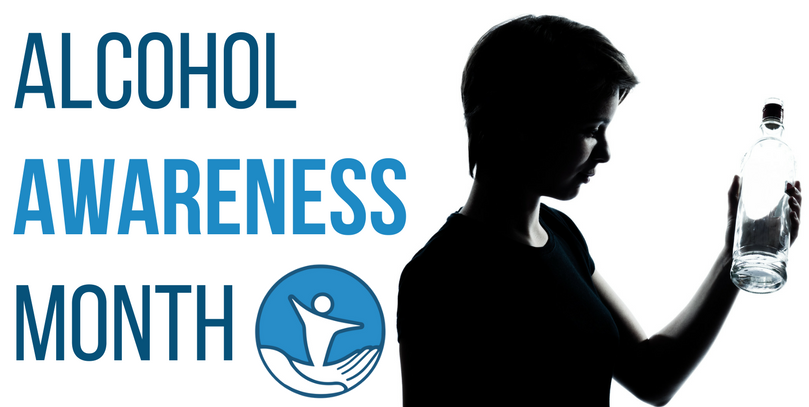
Did you know that April is Alcohol Awareness Month?
According to the Center for Disease Control and Prevention (CDC), excessive alcohol use led to approximately 88,000 deaths each year between 2006 and 2010. Among working-age adults between 20 and 64 years old, excessive drinking was responsible for 1 in every 10 deaths. Alcohol abuse is a greater risk than many people realize. Sadly, underage drinking in America has also become a very serious problem.
Back in April of 1987, the National Council on Alcoholism and Drug Dependence, Inc. (NCADD) began sponsoring the national observance of Alcohol Awareness Month in order to increase public awareness and understanding of the risks associated with alcoholism. America’s relationship with heavy drinking is already pretty intense, so taking the time for this month to reflect is probably a good idea.
A big goal of this observance is to reduce the stigma attached to alcohol abuse and addiction. Advocates are also encouraging local communities to focus on alcoholism and alcohol-related issues. Alcohol Awareness Month isn’t just for looking at the impacts on society, but also at the risks to the individual, and promoting education.
NCADD states that the theme for Alcohol Awareness Month is- “Changing Attitudes: It is not a rite of passage.”
Changing Attitudes
The risk alcohol poses to young people is not something to take lightly, but sadly many people do. Too many parents are willing to overlook their children drinking underage because they have adopted the idea that drinking in your teens and early twenties is a ‘rite of passage’. This mindset actually minimizes the reality, which is that alcohol use is especially harmful to young people. But many parents just assume their kids will “get through it”. Parents frequently chalk the whole thing up to a “phase” that all young people experience. But is it safe to take it so lightly?
However, drinking is directly associated with many severe problems for young people. This shows that parents face some unique challenges when talking to children and young people about drinking and drug use. However, according to the NCADD, research has shown that kids who have conversations with their parents and learn about the hazards of alcohol and drug use are 50% less likely to use these substances than those who don’t. Parents have a critical position in alcohol abuse prevention. They have the power to help change the attitudes that lead to minimizing destructive behaviors like underage drinking.
Addressing the role parents can play in teaching their kids about the risks of alcohol is what this year’s Alcohol Awareness Month is all about.
Believe it or not, parents can help kids understand that using alcohol isn’t a healthy or effective way to feel or be independent. It might seem “cool” but it isn’t a safe or sustainable strategy for fitting in socially. People may think of drinking like a minor rebellion that provides a short-term solution, but that kind of logic can easily lead to a more serious long-term problem.
Underage Drinking
To put into perspective just how serious underage drinking is, we can take a look at more statistics from the CDC.
- Excessive drinking is responsible for more than 4,300 deaths among underage youth each year.
- 11% of all alcohol consumed in the United States is by people between 12 and 20 years old, even though it is illegal.
- More than 90% of the alcohol consumed by people between 12-20 years old is done by binge-drinking.
There are a lot of terrible consequences that result from underage drinking, including:
- Memory problems
- Abuse of other drugs
- Changing in brain development (which could have a long-term impact)
- Traffic fatalities
- Violence
- Suicide
- Higher risk of homicide
- Educational failure
- Alcohol overdose
- Unwanted, unplanned and unprotected sex
- Physical or sexual assault
- Legal problems
- Hangovers or Illnesses
- Death from alcohol poisoning
According to the CDC, young people who start drinking before age 15 are actually six times more likely to develop alcohol dependence and abuse later in life than people who begin drinking at or after age 21. So how can you get involved in making a difference? There are a lot of ways to acknowledge Alcohol Awareness Month.
Acknowledging Alcohol Awareness Month
April has a lot of local, state, and national events. These are opportunities to help educate people about the treatment and prevention of alcoholism, particularly among our youth. They are also meant to highlight the important role parents can play in helping kids better understand the impacts of alcohol.
Local NCADD Affiliates, as well as schools, colleges, churches, and countless other community organizations, will sponsor and host a number of activities, and you can even find a way to organize your own Alcohol Awareness Month events via the NCADD website. The NCADD even encourages everyone to participate in alcohol-free days.
An easy way to join the conversation is to follow #AlcoholAwarenessMonth
These events are also meant to encourage individuals and families to find help concerning alcohol-related issues. Sometimes this kind of awareness comes down to acknowledging the problem in your own life. Whether it is your own drinking, or that of a loved one, seeking help and support can change everything. Alcohol Awareness Month provides opportunities for prevention and promotes treatment for those who need it.
Alcohol abuse and alcoholism should not be taken lightly. In fact, alcohol withdrawal can be extremely dangerous. For those addicted to alcohol, it is not recommended to try and get off of alcohol without medical supervision. Safe medical detox is the most effective and supportive environment for those with an alcohol dependence. There are a lot of resources available to those who need the help. Alcohol Awareness Month is the perfect time to have that conversation with someone you care about.
Alcohol Awareness Month not only helps us understand the dangers of alcohol, but it reminds us that we are not alone. It helps us to see not only is alcohol dangerous but also that there is hope for those who have already suffered because of alcohol. If you or someone you love is struggling, please call toll-free now. We want to help.
CALL NOW 1-888-922-5398
by Justin Mckibben | Mar 20, 2018 | Donald Trump, Drug Dealers, Drug Policy, Drug Trafficking, Fentanyl, Heroin, News, Opioids, Prescription Drugs, Synthetic Drugs, War on Drugs

The fight against prescription opioid abuse, heroin, and fentanyl in America continues to intensify. Our political landscape may soon see even more drastic shifts because of it. Controversy and conjecture have surrounded many ideas brought to the table on both sides. Even the President himself has been behind some pretty divisive propositions. Then Monday, President Trump unveiled his plan for combatting the ongoing opioid crisis in America while in New Hampshire.
During his speech, the President talked up a few key elements of his plan; some we have heard of before, and others have only recently become a serious topic of conversation. As the administration puts the final touches on their proposals, we thought should take a look at some of the highlights and see which of his plans could actually work, and why experts and advocates believe others probably won’t.
Arguably, there are some pretty good ideas here… and some pretty bad ones, depending on who you ask.
An Opioid Vaccine
Let’s kick this off on a high note.
The Trump opioid plan includes supporting the search for a vaccine. This honestly seems like a good ambition to get behind, but will it work? Researchers at the Walter Reed Army Institute of Research and the National Institute on Drug Abuse developed an experimental heroin vaccine back in December. So far the compound has been tested with rats and mice. Their latest breakthrough found that antibodies in the vaccine bound to the heroin before crossing the blood-brain barrier. This reaction effectively prevents the euphoric effects of the drug.
While this is an exciting development, it is still a vast leap to go from treating mice to treating humans. We still have a long road ahead before this possible vaccine could be approved. However, more funding and resources from the federal government could make a big difference.
Even so, it is important to note that this vaccine will not be a cure-all answer that fixes everything. After all, we have seen opioid blocking methods before. Drugs like Vivitrol and other implants were also developed to hamper the effects of opioids, and they still haven’t stopped the crisis from growing. Experts are already saying this vaccine will only work in the short term and require repeated doses. It is expected to be an incredibly expensive treatment, and it may only be another variation of the Vivitrol shot. Still, some believe this vaccine, used alongside other treatment methods, could be a crucial tool in fighting opioids.
Big Pharma and Prescription Drugs
The Trump opioid plan also takes a look at prescription opioids. The President acknowledged the contribution of pharmaceutical companies and prescription drugs to the opioid crisis. In his statement, he indicated that this administration support research for opioid alternatives.
“That includes federal funding for the development of non-addictive painkillers.”
In talking about prescription drugs, President Trump said the administration also planned on addressing the issue of overprescribing addictive medications. He even touted the Justice Department’s new task force that may soon be fighting Big Pharma companies in court.
“Our Department of Justice is looking very seriously into bringing major litigation against some of these drug companies. We will bring it at a federal level.”
He acknowledges the recent work at the state level to hold Big Pharma accountable. President Trump said his administration will be working to reduce opioid prescriptions by 1/3 over the next three years. Hopefully, as time goes on there will not only be more accountability to those manufacturing these potent medications, but also more options for the thousands of people suffering from chronic pain who do need pain management.
Commercial Campaign
This show we have seen (fail) before. The crisis probably isn’t going to get fixed with re-runs and reboots.
For a long time, Trump has been talking about creating a media campaign to try and combat the opioid crisis. In his remarks on Monday, the president said,
“We are thinking about doing a really large-scale rollout of commercials that show how bad it is for the kids… Scare them from ending up like the people in the commercials.”
Trump said he would spend a lot of money and direct people to make the commercials depict “pretty unsavory situations” claiming that this strategy has worked before with cigarette smoking.
Sadly, the reality is that we have tried this before. Using anti-drug messaging that specifically targets kids and young adults is exactly what was done with the “Just Say No” ad campaign of the 1980s and early 1990s, and the DARE program of the same period. Neither program was proven to be particularly effective in reducing drug use. Some have even argued it did the opposite and actually intrigued young people into drug use.
This is just one part of the Trump opioid plan that reminds people of the ideas pushed in the failed War on Drugs that already destroyed countless lives and only ended up making the problem worse.
So how will this new campaign be different?
The Border
The President also mentioned the importance of combatting the flow of illicit drugs like fentanyl and heroin into the country. He became particularly energized of course when talking about his proposed border wall with Mexico, saying,
“90% of the heroin in America comes from the southern border, where eventually the Democrats will agree with us and we will build a wall to keep the damn drugs out.”
However, many are not so convinced that the wall will be especially effective in stopping drug traffickers. Support for the wall experiences ups and downs as negotiations over immigration continue. Then the President took the opportunity to scrutinize sanctuary cities, calling out California and claiming these places were harboring the most terrible kinds of criminals, including drug dealers.
If part of the Trump opioid plan is to apply even more pressure to sanctuary cities, we may see more back-and-forth when it comes to compromises on immigration policy reform. Recently the Republicans were using DACA as a bargaining chip with Democrats to get the infamous border wall built, but now Trump says Democrats are holding onto it so they can use the issue during the election cycle.
Death Penalty for Drug Dealers
Now, THIS proposal is the one part of the Trump opioid plan that is causing the most controversy, and understandably so.
UPDATE: Attorney General Jeff Sessions sent out a memo Wednesday officially asking federal prosecutors to pursue the death penalty in drug trafficking cases “dealing in extremely large quantities of drugs”. So the administration is now implementing President Donald Trump’s plan to ramp up “tough on crime” punishments in response to the opioid crisis.
In his speech, the President brought having the death penalty for drug traffickers to the forefront. This is an extreme even some of his supporters believed was more tongue-in-cheek than actual proposed policy. The details on this proposal were still pretty scarce at the time. Some support Trump pushing for the death penalty, saying this punishment would only apply to high volume, kingpin-level dealers. But what we should consider is this:
- The federal death penalty is available for a few drug offenses. This includes violations of the “drug kingpin” provisions in federal law.
- Reports indicate that Trump wants Congress to pass legislation that will reduce the amount of drugs needed to trigger mandatory minimum sentences for traffickers.
So should we assume that the President intends to expand what qualifies as “drug kingpin” activity to make the death penalty easier to enforce? If so, what does that mean exactly? And what does it mean for further enforcing other mandatory minimums?
The Justice Department has said it would seek the death penalty “when appropriate under current law.” While drug-related murder is already a capital offense, no one has ever been executed by those rules. However, President Trump says that he and the Justice Department are working very hard to change the laws. To do so would require an act of Congress, and many believe Congress is highly unlikely to expand the federal death penalty. So will any of this be changing soon?
In his comments, President Trump stated,
“If we don’t get tough on the drug dealers, we are wasting our time. And that toughness includes the death penalty.”
President Trump’s call for the death penalty is being strongly met with condemnation. The proposal’s critics range from treatment advocates to law enforcement officials and civil liberty organizations.
Maria McFarland Sánchez-Moreno, executive director of Drug Policy Alliance, said in a statement,
“If this administration wants to save lives, it needs to drop its obsession with killing and locking people up, and instead focus resources on what works: harm reduction strategies and access to evidence-based treatment and prevention.”
Jesselyn McCurdy, deputy director of the American Civil Liberties Union’s Washington office, said,
“Drug trafficking is not an offense for which someone can receive the death penalty,”
McCurdy is referring to a Supreme Court precedent that puts constraints on using the death penalty for a convicted person who did not commit murder.
Furthermore, there are plenty of arguments that this kind of policy is not practical. Some say it would either be so broad it became unconstitutional, or so specific that it would be obsolete. This aspect of the plan has sparked nationwide debate. Americans everywhere are arguing whether or not a drug dealer should be responsible for the deaths of customers.
Sadly, this is so frustrating because past data does not hold with the idea that getting ‘tough’ on drugs is more effective than offering treatment opportunities. One of the best studies backing this is a 2014 study from Peter Reuter at the University of Maryland and Harold Pollack at the University of Chicago. Researchers determined that while simply prohibiting drugs to some extent does raise their prices, there’s no good evidence that tougher punishments or harsher supply elimination efforts do a better job of driving down access to drugs and substance misuse than lighter penalties.
In fact, many addiction advocates argue that harsher punishments can actually be counter-productive because they end up punishing people who need treatment, not incarceration. So the need for a more comprehensive approach to opioid addiction treatment is paramount. Hopefully, this administration will see the need to focus on support for treatment, instead of a primarily punitive focus.
Trump Opioid Plan on Treatment
This is a critical and commendable element of the Trump opioid plan, and I applaud some of its intentions. However, I wish we could talk a lot more about this and a lot less about captial punishment.
Still, I give them credit for saying they want to increase access to addiction treatment and adopting harm reduction. There isn’t much detail to go on though, as far as how this will happen. One aspect is to increase the use of medications such as methadone and buprenorphine.
As another highlight, Trump also asks Congress to repeal a rule blocking Medicaid payments to larger treatment facilities, which could provide a boost in the billions to inpatient clinics. Hopefully, this is one factor of the Trump opioid plan that will pan out, because one of the biggest issues the US faces with the opioid crisis is a limited access to adequate treatment options. If the White House allows Medicaid to reimburse larger treatment facilities, more people will be able to get effective care. Still, it is unclear how many resources the administration is willing to commit to treatment resources.
Hopefully, the Trump opioid plan will evolve and we will see a resurgence of resources going toward helping get people suffer the help they need. It is understandable to want to curb the rise of addiction through anti-trafficking measures and raising awareness, but we already have thousands and thousands of people struggling every day all over America who need help. Preventive steps are crucial, and the President is trying to push for them. But it is vital that we also give everyone already struggling more of a fighting chance. The possibility of more people having greater access could help create a huge shift.
Palm Healthcare Company believes in providing innovative and effective holistic treatment options for those who are battling with addiction. Our facilities believe in comprehensive and compassionate care, and our mission every day is to transform as many lives as possible. Together, we can make a difference. If you or someone you love is struggling with substance abuse or addiction, please call toll-free now. We want to help.
CALL NOW 1-888-922-5398
by Justin Mckibben | Mar 13, 2018 | Alcohol, Alcohol Addiction, Alcoholism, Binge Drinking, Death, Inpatient Treatment
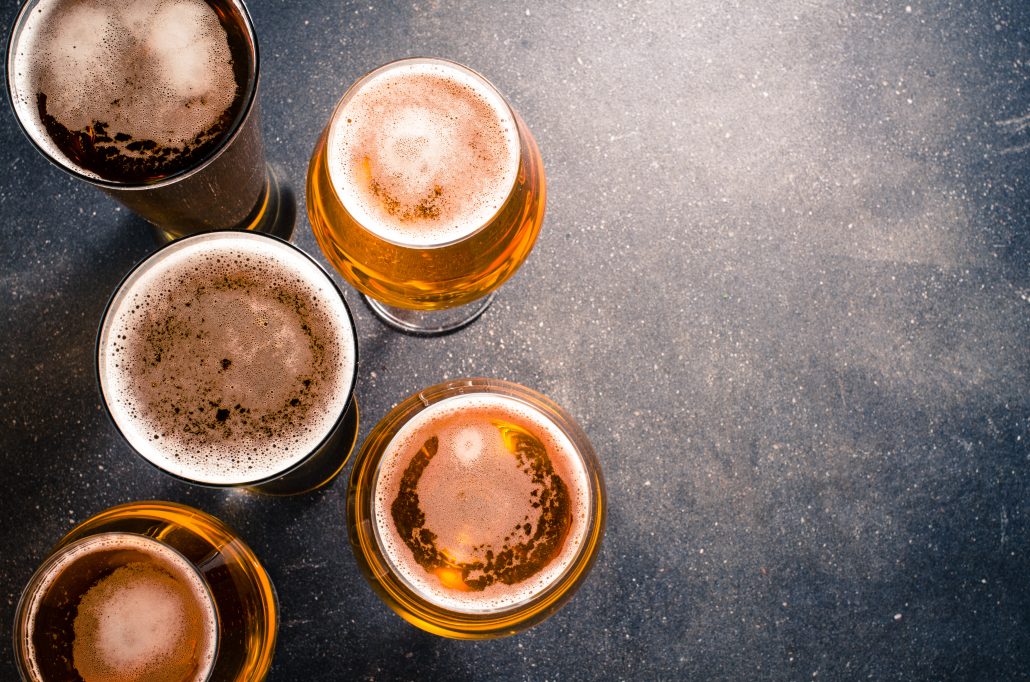
Even though the country is very aware of the opioid crisis that continues to claim lives every day, one of the most dangerous drugs in America is still alcohol. Heavy drinking in the US is also a deadly epidemic. According to the Center for Disease Control and Prevention (CDC) an estimated 90,000 people die from excessive drinking every year.
Another new report also indicated that those who do die from alcohol abuse actually die an average of 30 years prematurely.
With more deaths related to heavy drinking than any other drug, which states have the highest rates? A new piece released on 24/7 Wall St. from last week went to work ranking all 50 states.
Defining Different Drinking
In order to better understand how troubling the data truly is, we first have to understand what qualifies as “excessive drinking”.
The CDC categorizes an alcoholic drink as something containing 0.6 fluid ounces of pure alcohol. Therefore, the CDC considers excessive drinking to include terms like:
For women, excessive drinking is four or more drinks on a single occasion. For men, it requires five or more drinks in one sitting.
When it comes to “heavy drinking”, by CDC standards:
- Women consume at least eight alcoholic drinks per week
- Men consume at least 15 alcoholic drinks per week
24/7 Wall St. analyzed CDC data on heavy drinking, along with census bureaus and the National Institute on Alcohol Abuse and Alcoholism (NIAAA) to create their report. What it shows is that 18% of Americans drink excessively, but that the difference between states it dramatic.
America’s Heavy Drinking States
-
Tennessee
- Adults drinking excessively: 11.2%
- Alcohol-related driving deaths: 28.0% (11th lowest)
-
West Virginia
- Adults drinking excessively: 11.4%
- Alcohol-related driving deaths: 32.0% (25th lowest)
-
Utah
- Adults drinking excessively: 12.4%
- Alcohol-related driving deaths: 19.7% (the lowest)
-
Alabama
- Adults drinking excessively: 13.0%
- Alcohol-related driving deaths: 29.4% (17th lowest)
-
Mississippi
- Adults drinking excessively: 13.3%
- Alcohol-related driving deaths: 23.3% (3rd lowest)
-
New Mexico
- Adults drinking excessively: 13.8%
- Alcohol-related driving deaths: 32.1% (25th highest)
-
Oklahoma
- Adults drinking excessively: 13.9%
- Alcohol-related driving deaths: 29.9% (19th lowest)
-
North Carolina
- Adults drinking excessively: 14.9%
- Alcohol-related driving deaths: 32.3% (24th highest)
-
Arkansas
- Adults drinking excessively: 15.3%
- Alcohol-related driving deaths: 28.4% (13th lowest)
-
Idaho
- Adults drinking excessively: 15.4%
- Alcohol-related driving deaths: 28.4% (23rd highest)
-
Maryland
- Adults drinking excessively: 15.5%
- Alcohol-related driving deaths: 32.8% (20th highest)
-
Nevada
- Adults drinking excessively: 15.8%
- Alcohol-related driving deaths: 32.8% (21st highest)
-
Arizona
- Adults drinking excessively: 16.0%
- Alcohol-related driving deaths: 27.6% (9th lowest)
-
Kentucky
- Adults drinking excessively: 16.3%
- Alcohol-related driving deaths: 28.5% (14th lowest)
-
South Carolina
- Adults drinking excessively: 16.4%
- Alcohol-related driving deaths: 37.8% (7th highest)
-
Delaware
- Adults drinking excessively: 16.6%
- Alcohol-related driving deaths: 37.9% (6th highest)
-
Indiana
- Adults drinking excessively: 16.8%
- Alcohol-related driving deaths: 23.6% (5th lowest)
-
Georgia
- Adults drinking excessively: 16.8%
- Alcohol-related driving deaths: 23.4% (4th lowest)
-
Kansas
- Adults drinking excessively: 16.9%
- Alcohol-related driving deaths: 27.3% (8th lowest)
-
Texas
- Adults drinking excessively: 17.3%
- Alcohol-related driving deaths: 29.9% (8th lowest)
-
Virginia
- Adults drinking excessively: 17.4%
- Alcohol-related driving deaths: 30.5% (20th lowest)
-
Florida
- Adults drinking excessively: 17.4%
- Alcohol-related driving deaths: 28.2% (12th lowest)
-
Wyoming
- Adults drinking excessively: 15.5%
- Alcohol-related driving deaths: 35.3% (10th highest)
-
New Jersey
- Adults drinking excessively: 17.6%
- Alcohol-related driving deaths: 24.3% (20th lowest)
-
Missouri
- Adults drinking excessively: 17.7%
- Alcohol-related driving deaths: 31.7% (23rd lowest)
-
South Dakota
- Adults drinking excessively: 17.7%
- Alcohol-related driving deaths: 35.2% (11th highest)
-
Washington
- Adults drinking excessively: 17.8%
- Alcohol-related driving deaths: 35.0% (12th highest)
-
Rhode Island
- Adults drinking excessively: 17.9%
- Alcohol-related driving deaths: 40.4% (3rd highest)
-
California
- Adults drinking excessively: 18.0%
- Alcohol-related driving deaths: 29.0% (15th lowest)
-
Pennsylvania
- Adults drinking excessively: 18.1%
- Alcohol-related driving deaths: 32.0% (24th lowest)
-
New York
- Adults drinking excessively: 18.2%
- Alcohol-related driving deaths: 23.0% (2nd lowest)
-
New Hampshire
- Adults drinking excessively: 18.4%
- Alcohol-related driving deaths: 31.2% (22nd lowest)
-
Connecticut
- Adults drinking excessively: 18.6%
- Alcohol-related driving deaths: 33.4% (18th highest)
-
Louisiana
- Adults drinking excessively: 18.8%
- Alcohol-related driving deaths: 32.6% (22th highest)
-
Oregon
- Adults drinking excessively: 18.8%
- Alcohol-related driving deaths: 32.8% (19th highest)
-
Colorado
- Adults drinking excessively: 19.1%
- Alcohol-related driving deaths: 34.7% (13th highest)
-
Ohio
- Adults drinking excessively: 19.2%
- Alcohol-related driving deaths: 34.3% (14th highest)
-
Massachusetts
- Adults drinking excessively: 19.5%
- Alcohol-related driving deaths: 27.8% (10th lowest)
-
Vermont
- Adults drinking excessively: 19.6%
- Alcohol-related driving deaths: 33.4% (17th highest)
-
Maine
- Adults drinking excessively: 19.6%
- Alcohol-related driving deaths: 39.8% (4th highest)
-
Michigan
- Adults drinking excessively: 20.0%
- Alcohol-related driving deaths: 29.4% (16th lowest)
-
Nebraska
- Adults drinking excessively: 20.4%
- Alcohol-related driving deaths: 35.6% (9th highest)
-
Hawaii
- Adults drinking excessively: 20.5%
- Alcohol-related driving deaths: 38.0% (5th highest)
-
Iowa
- Adults drinking excessively: 21.0%
- Alcohol-related driving deaths: 25.4% (7th highest)
-
Minnesota
- Adults drinking excessively: 21.1%
- Alcohol-related driving deaths: 30.9% (21st lowest)
-
Illinois
- Adults drinking excessively: 21.2%
- Alcohol-related driving deaths: 34.2% (15th highest)
-
Montana
- Adults drinking excessively: 21.8%
- Alcohol-related driving deaths: 46.3% (2nd highest)
-
Alaska
- Adults drinking excessively: 22.1%
- Alcohol-related driving deaths: 33.8% (16th highest)
-
Wisconsin
- Adults drinking excessively: 24.5%
- Alcohol-related driving deaths: 36.9% (8th highest)
-
North Dakota
- Adults drinking excessively: 24.7%
- Alcohol-related driving deaths: 46.7% (the highest)
What State Stats Tell Us
Looking at some of the data, you might be surprised at where some of these states ended up in the rankings. One thing that comes to no surprise is that the state with the highest rate of excessive drinking- North Dakota- also has the highest rates of alcohol-related driving deaths.
But there are things that you might not be able to tell from these numbers at face value. For one, the director of the NIAAA George Koob claims,
“There is a clear correlation between a state’s excessive drinking rate and income.”
For example, the top 25 states with higher drinking rates also have similarly high median household income. Out of those 25, 14 of them have incomes that exceed the national average of $57,617. Compare that to the 10 states with the lowest drinking rates, with 9 of them having household incomes well below that same average.
However, Koob cautions us not to see this correlation too cut and dry, stating:
“If you look at individuals, the [drinking-to-household income] pattern is somewhat different.”
Someone may look at the report and suggest that affluent individuals frequently drink to excess, however, they don’t appear to drink as heavily. In fact, it seems low-income individuals drink to excess less frequently, but when they drink, they drink heavily more consistently.
Overall, we should take notice of just how prevalent excessive drinking is in different areas all over the country. In 2016 the population of North Dakota (#1 on the list) was around 757,952. Based on this number, 24.7% excessive drinking comes out to around 187,214 adults. Even with Tennessee, the state with the lowest rate, the numbers are pretty serious. With a 2016 population of 6.651 million, 11.2% comes out to 744,912 adults drinking excessively. So almost the entire population of North Dakota.
We have to be able to acknowledge risk behavior like excessive and heavy drinking in order to help those who may be struggling with alcohol use disorder. With alcohol doing real damage to so many lives in every corner of America, providing treatment programs for those struggling with alcohol use disorder is incredibly important. If you or someone you love is struggling with alcohol abuse or addiction, please call toll-free now. You are not alone.
CALL NOW 1-888-922-5398
by Justin Mckibben | Mar 12, 2018 | Drug Dealers, Drug Policy, Drug Trafficking, Law Enforcement, News, Violence, War on Drugs

Philippines President Rodrigo Duterte proclaimed a bloody war on drugs back in June of 2016. As of 2017, the murderous “drug war” resulted in the deaths of more than 12,000 ‘suspects’, according to Human Rights Watch in the World Report 2018.
Each time his violent anti-drug campaign is questioned, President Duterte responds by harassing and threatening critics. From the beginning, officials have publicly reviled, humiliated and even jailed human rights advocates. Some contest that not only has Duterte resisted calls to end this bloody war on drugs but has actually gone on to use populist rhetoric to ridicule activists from investigating his chaotic crusade.
Recent remarks from American President Donald Trump are also being brought into question as he seems to believe executing drug dealers is a reasonable approach. Transcripts from a call Trump had with Duterte actually say that he was praising the Philippines President for encouraging carnage in his own streets.
A new report states that President Duterte has actually told his police and soldiers not to participate or cooperate in any probes against his militant anti-drug warfare. Will the Philippines President continue to resist any attempts to curb his brutal campaign?
Extrajudicial Killings and the Bloody War on Drugs
Firstly, let us clarify what an extrajudicial killing is (also called extrajudicial execution). This is when a person is killed by governmental authorities without the sanction of any judicial proceeding or legal process. Essentially, these executions bypass due process and are mostly regarded as unethical. The Philippines bloody war on drugs is truly horrific considering their president has:
- Urged citizens to kill suspected criminals and drug addicts
- Ordered police to shoot-to-kill
- Offered bounties for dead suspects
President Duterte has even admitted to killing suspected criminals personally, and all of which seems to fit right into the category of extrajudicial killings. Duterte was a mayor in Davao for more than 20 years. During that time, he stalked the streets with the infamous Davao Death Squad in attempts to find and kill suspected drug criminals.
This is all pretty terrifying. Especially when you consider that out of the estimated 12,000 deaths:
- Approximately 4,000 occurred during police led operations
- The rest- estimated 8,000- we killings by “unidentified gunmen”
A huge factor to remember is they aren’t only killing suspected dealers, but also drug users or suspected addicts. When most of the world is working to make help available to those who desperately need it, this president thinks murdering addicts will eliminate the drug problem.
There has been mounting pressure from local and international entities to investigate the thousands of slayings by police. But in a speech delivered to elite armed police forces in Davao City, Duterte stated:
“When it comes to human rights, or whoever rapporteur it is, my order to you: Do not answer. Do not bother.”
Duterte defends his order toward security services, saying:
“Who are you to interfere in the way I would run my country? You know very well that we are being swallowed by drugs.”
This definitely is not the first time President Duterte has made some harsh comments while pushing back against outside influence.
Zero Tolerance for Any Interference
In 2016 a lot of things happened concerning the bloody war on drugs in the Philippines. We won’t break down the entire timeline. However, we encourage everyone to do a little reading into the series of disturbing events. At one point, the UN rapporteur on extrajudicial executions Agnes Callamard was formally invited by the Philippines government to investigate the controversial deaths. Then, President Duterte had an abrasive change of heart, saying he would “slap” Callamard if she began her investigation.
Not only did Duterte attack outside influence, he also encouraged police to attack human rights advocates in the Philippines. He has reportedly told the police to shoot these individuals “if they are obstructing justice.”
Duterte publicly condemns the official Commission on Human Rights. He has even threatened to abolish this entity entirely, despite it being mandated by the country’s constitution. It seems as though the government of the Philippines is prepared to stop at nothing to continue waging this gruesome war on anyone and everyone connected to drugs. Now that means going to war with those fighting to defend their human rights.
Examining the International Outcry
Last Tuesday, Duterte said he would accept the UN investigation into his brutal drug policies. However, he claims that Callamard is biased and that he will not cooperate if she was leading the investigation.
In February, another examination into the war on drugs in the Philippines was opened by the International Criminal Court (ICC). While this examination could eventually lead to charges of crimes against humanity, the process itself could take several years. By then, how many more victims could this ongoing onslaught claim? If Duterte continues to instruct law enforcement and military to resist investigations, how much harder could it be to stop the killing?
Human rights groups have said many of the killings by police have been outright executions. However, law enforcement officials deny these allegations. Even with surveillance footage that contradicts their claims.
So far, the killing has not stopped. Between December 5, 2017, and February 1, 2018, almost 50 people suspected of using and selling drugs were killed by officers.
The drug problem is serious; there is of course no denying that. Opioid overdose rates in America have continued to rise, and death rates related to drug use continue to be a leading cause of death in the US. However, the majority of experts agree that our own war on drugs was extremely flawed and ultimately failed, especially concerning the more punitive aspects, and it was not nearly as violent or aggressive as the actions we see now in the Philippines. If all of this teaches us anything, we should be able to see that aggressively attacking and executing addicts and suspected drug dealers is not going to solve this problem.
The best resource we have at our disposal when facing the addiction epidemic in America is innovative and effective treatment opportunities. Fighting the opioid crisis doesn’t mean fighting the addicts. Recovery means treating the underlying issues and helping as many people as possible find a way out. If you or someone you love is struggling, please call toll-free now. We want to help.
CALL NOW 1-888-922-5398

















